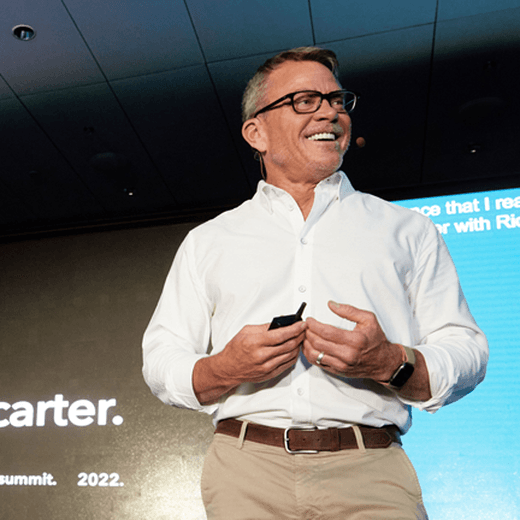Dean Carter |
Shortly after joining Guild last year, I attended a company strategy meeting with the executive team that blew my mind. The quality of the contributions from the leaders was impressive, sure, but what struck me more than anything was the role of our Executive Coach in Residence, Kaley Klemp.
Originally the executive coach for Rachel Romer, Guild’s CEO and co-founder, Kaley now thinks about coaching the whole organization. She regularly joins leadership meetings and helps the entire team show up at its best. It’s one thing to read that, but I promise it’s a completely different experience to sit in that strategy meeting and periodically hear comments along the lines of, “That was great — the way you summarized what everyone agreed on before moving to the next section!” Or, “It looked like someone had something to say and hasn’t had a chance. Can we hear from them next?”
If you think about a basketball team, of course there’s a head coach who’s constantly thinking about how to work with everyone to create the most high-performing team they can. Even if the players work with their own individual coaches, there’s strong and intentional communication among the coaching staff to make sure the guidance is coordinated and generates a team outcome that’s greater than the sum of its parts.
While it’s become more common for executives and high performing employees to work with a coach, I had never seen a “head coach” at a company before — let alone one who had built a deep awareness of what every member of the executive team was working on so she could comment on the group dynamics and also send private messages to individuals to coach them in the moment on things they were doing well or could improve.
While it’s become more common for executives and high performing employees to work with a coach, I had never seen a “head coach” at a company before.
Applying the Power of Coaching
It may not be financially or culturally feasible to bring a company coach into every company’s leadership team, but there are undoubtedly ways to draw from the coaching discipline to improve any workplace and create a more consistent culture of growth and development.
1. Lead or manage like a coach.
Some of the best coaching happens from people within companies who don’t have “coach” in their official title. In fact, that’s actually how it should work. Having a coach on staff is wonderful, but leaders and managers are going to be more successful if they incorporate coaching best practices into their interactions with their team members and direct reports.
This is a great opportunity for Leadership & Development teams to bring in coaching curriculum and expertise to help equip leaders and managers with the skills to model effective coaching in their daily work.
2. Aim to be the best version of yourself, not someone else.
One of the most powerful things I’ve learned from Kaley Klemp and the conscious leadership ideology that she advocates is that the goal isn’t to try to be like someone else. Even though the coaching world and the self-help literature are full of examples of teachers trying to encourage people to emulate others, it was an unlock moment for me to discover that we can often produce the best results by focusing on being the best version of ourselves.
It may sound like a platitude, but by moving away from the idea of needing to be like others, we can focus in on our own strengths and develop those strategically in partnership with other leaders to enable the highest functioning executive team.
3. Start with self-leadership.
Coaching effectively is a “put your own mask on first” type of discipline. Before you can effectively lead or manage others, it’s important to focus on managing your own emotions, time, expectations of yourself, and whatever stories you tell that might be holding you back.
In fact, we’ve found at Guild that self awareness is a key predictor of success at the leadership level. As a result, it’s the top competency we look for when we’re interviewing candidates. When self awareness is high, there’s room for so many more meaningful and sustainable contributions to the business.
If this theme has lit you up, I would love for you to visit my LinkedIn profile and let me know about your experience with coaching among the teams you’ve led or experienced. Please share if you’ve ever been on a team that had a great coach, or maybe one that you think should have had one. If you think you would benefit from having a coach, that would be great to know, too.
I look forward to reading your thoughts.
Until next time, be well and be seen.
Dean’s list
To read more insights about the evolving role of purpose-driven HR leaders from Dean Carter and his CHRO Compass community, sign up here.


